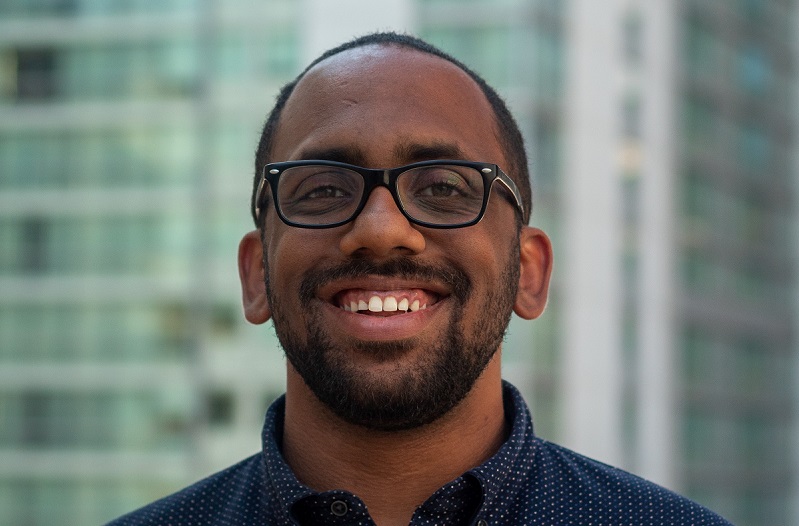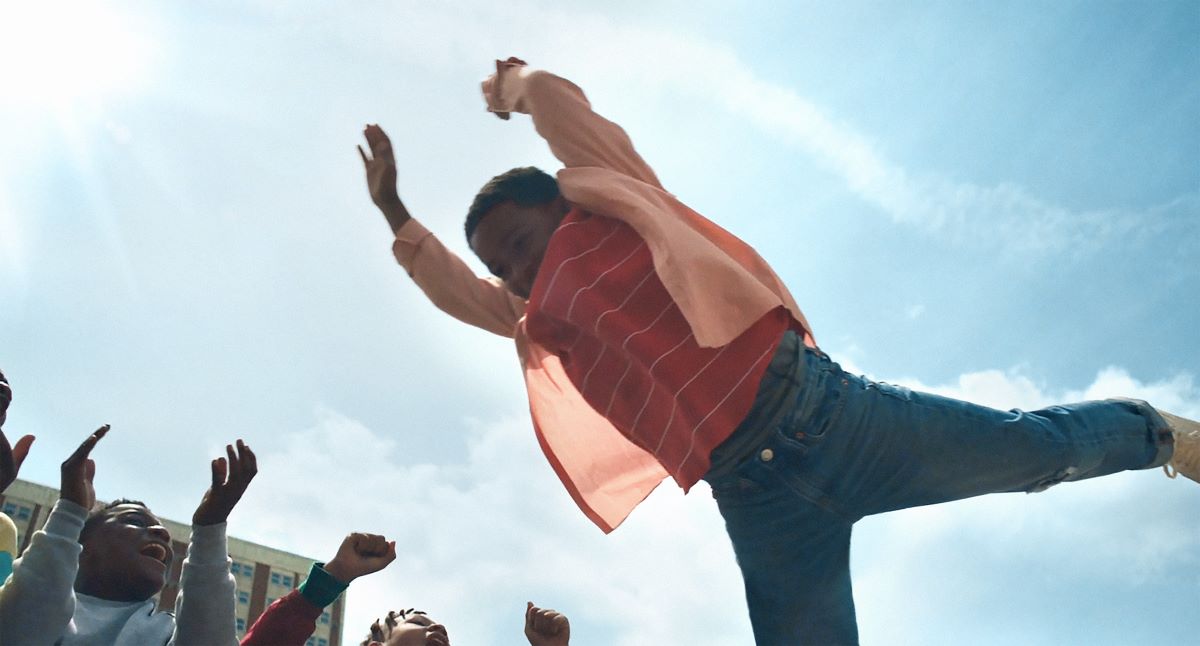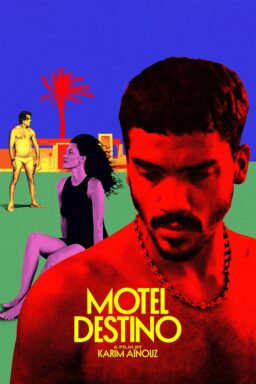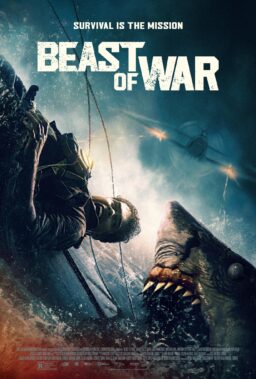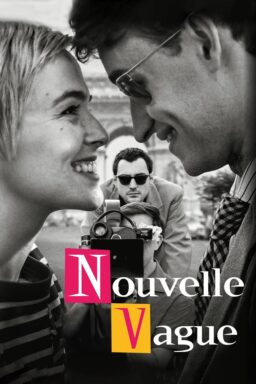Ever since Bernard Rose turned to Chicago’s Cabrini-Green as the setting for “Candyman,” the housing project’s standing as an infamous area of crime, drugs, and murder—a place where hope goes to die—has run parallel to outlooks on Chicago. The legend of Cabrini-Green remains strong. And yet, Cabrini-Green has always been more than its national reputation. There was, of course, crime, drugs, and death. But those plights weren’t the only inhabitants of the neighborhood. There was humanity; there were schools, children, and dreams and desires, too.
With her new film “We Grown Now,” writer/director Minhal Baig, a Chicago native, is entering Cabrini-Green as an outsider. But what follows isn’t poverty porn or a twee break from reality. Her film sees best friends Malik (Blake Cameron James) and Eric (Gian Knight Ramirez), ten-year-old boys navigating the harsh high-rises through play and humor, excursions to the Art Institute, and explorations on CTA trains. After the sudden murder by a stray bullet of seven-year-old Dantrell Davis—a real-life event in 1992 when the young boy was walking to school with his mother—Malik’s family decides to make a change. His mother, Dolores (Jurnee Smollett), hears a position at her job is opening in the suburbs; his grandmother Anita (S. Epatha Merkerson) thinks Dolores should take the opportunity—even if it means breaking Malik and Eric’s friendship by moving away from Cabrini-Green.
“We Grown Now” is Baig’s second film and a noted step forward in style and storytelling. Her first film, “Hala,” was a deeply personal coming-of-age portrait, drawing on her personal family experiences to craft the narrative of a teenage girl balancing young love with cultural responsibilities. A native of Chicago’s Rogers Park—an area worlds away by miles, race, and class from Cabrini-Green—Baig couldn’t draw on any obvious personal connection to make “We Grown Now.” Rather, she found a symbolic connection with the area, an interest in how you can individually define what home means. That emotional thread inspired her to interview many of the former inhabitants of the high-rise apartments, drawing on their memories to recreate what was once good about the area and the moment when it permanently shattered.
RogerEbert.com sat down with Baig during the Chicago International Film Festival—where “We Grown Now” had its U.S. premiere—to talk about the inspirations behind her film, filming in the Art Institute, and giving voice to the mundane.

In other interviews, you’ve talked about really wanting this movie to be a story about what home means. Why did you want Cabrini Green as a setting for that theme?
By the time I graduated and came back to Chicago, the towers were demolished. So when I came back, I was really interested in exploring home from the perspective of what home means to people who don’t have the physical marker of it anymore. And so there was that. And then I think the second thing was I very easily connected to Cabrini-Green residents from the jump. Jamie Kalven, the founder of Invisible Institute, had been doing a long-term project called “Kicking the Pigeon” for View From the Ground, which were first-person as citizen journalism pieces. So he spent two decades in and around Stateway Gardens. He hadn’t been in Cabrini-Green, but he knew people who knew people. The Cabrini-Green people have found ways to remain connected with each other through Facebook groups.
I think the other part was that Cabrini-Green had an anti-eviction group to fight the city that was actually very active. This community continues to exist in all these different forms. Which I thought was so interesting. And so that’s when I connected to Tremaine Johnson; he was the first person who had multiple generations of his family live and grow up in Cabrini-Green. That’s also where the character of Anita comes from; Tremaine’s family is from Mississippi. I interviewed him, and then his family, aunt, and uncle, and they invited me to his house. They told me stories stretching back over sixty years, everything all the way up until when his family moved out. So that was the entry point.
The other thing that kept coming up was the year 1992, which was the year Dantrell Davis was shot and killed. It was significant because he wasn’t the first kid killed that year or in Chicago or Cabrini-Green. But it was significant because of the nature or the context around it, particularly since it happened in broad daylight while he was walking to school with his mom; it set off a shockwave in the community and the neighborhood. Most notably, the lack of response from the city at the time, was to address the problem in all of the ways that were ineffective. That story came up a lot of times and centered the film to that year. That’s where it started to come together.
Did the story of Dantrell make it so that this needed to be a coming-of-age tale as opposed to a film told from the mother’s perspective?
When I was doing the interviews, especially Trey, who is a couple of years older than me, he was a kid during that time, and what he saw in the high rises was really different. There was so much of it that was colored in a different way. He spoke about mattress jumping and his friendships and the tragedies, too, like going to school and realizing that if someone’s not at school today, that means they’re gone.
That’s where I set my mind on because it was a perspective I hadn’t seen before. If it was from an adult’s perspective, I’d feel like I’d be telling a tonally different story, which feels more in line with the culturally dominant narrative about Cabrini-Green, which is that this place was full of drugs, crime, and violence. I think from an adult perspective, especially from Dolores’s viewpoint, she’s able to see what’s happening and the need to make a difficult decision; from the kid’s perspective, it’s about losing their best friend. The latter perspective allowed for the film to have more joy in it.
One of my biggest references is “Crooklyn,” which I love. I’ve watched that movie so many times. But one of the ways I think that Spike Lee is able to marry the everyday mundane stuff of being in a family—there’s that scene where the mom wakes up everyone in the house—to her going away for the summer and coming back is from her perspective. Her viewpoint allowed all of the things that may seem trivial from an adult perspective to live inside of the story and have meaning.
“Crooklyn” is still very underrated. It’s amazing. Spike is really good at family narratives and working with children. You see it in “Clockers,” too.
There’s an unexpected tenderness in “Crooklyn,” especially the scenes with the kids where they’re getting into a fight. I just felt like there’s something about that experience that is so burned to your memory of what that neighborhood felt like.
Along with “Crooklyn,” were there any other films that inspired “We Grown Now”?
There were so many, like “Killer of Sheep.” I was also inspired by “The 400 Blows” too. There are moments where I felt like, okay, I need to capture this fleeting feeling of joy that only exists in this window of time with this particular friend before it’s then gone.
The flying through-the-air scene, with the mattresses, on a thematic level, works the same way as the kids jumping between rooftops in “Killer of Sheep.”
There were so many films that inspired me, but also a lot of photography too. Like that opening playground sequence was inspired by Tyler Mitchell’s photography. Also, LaToya Ruby Frazier was significant. When the kids are running to the Art Institute, the way a huge shadow falls across the road was inspired by Roy DeCarava’s photo “Sun and Shade;” he does such incredible things with shadow.
When I watched “Pariah,” I was like, this is one of the most beautifully shot films I’ve seen in my life. And then I read all these interviews with Bradford Young afterward, and DeCarava’s name kept coming up for him as an influence. So I have his books like “Light Breaks.” But there’s one book that has these photos alongside text by Langston Hughes called “The Sweet Flypaper of Life.” That one had all these incredible images, the shadow shaping these people’s faces. It became a big influence on the lighting and warmness too. There were so many influences. There’s probably like 20 photographers that we drew from.
And then, the production design was inspired by the opening paragraph of “A Raisin in the Sun.” It opens up with the description of the place, of the Younger home. And they talk about how there’s all this generational history in the place, but it was worn out. It’s at the end of its life, and it’s so beautifully written.
I love how warm this film feels, particularly the interiors. So many films set across urban landscapes try to project a gritty exterior. Why did you do the inverse?
I just knew that I wanted the interiors to feel like a place to retreat to, particularly in Malik’s home which has all of this family support. It has to feel like a place where he could enjoy returning home to, one that has all this history and good memories so that when the raid happens, it’s like something has been violated, that a line has been crossed. And now that place can never feel the same way again. So the lighting needed to make us care about the home and see it the way that Malik and the family see it.
I also want to ask you about filming at the Art Institute.
It was really challenging to film there. We had, I think, two and a half hours or something. Three hours, max.
I was wondering how long you could shut down an entire museum.
I think it’s three hours. And we were very limited in what we could bring in. Thankfully, it was just the two kids and then the extras in the background. For a long time, when I thought about that scene in the script, I didn’t want them to just go to the Art Institute and have a good time. I needed to say something with this sequence and for them to have an experience that’s different from what we’ve seen before; obviously, I’m a fan of “Ferris Bueller's Day Off.”
There was this interview with Hughes, and he said people had asked him why he had the Art Institute in the movie. He was like, I just like it. He didn’t have to explain it. He just liked going there. But in this film, I wanted to revisit this place that many might be familiar with but do it in a different context. Those paintings have so much cultural resonance to so many people. It’s why the last painting, “Train Station,” resonates with the kids personally.
I first saw that painting when I was walking around the Art Institute. I was like, oh wow. I haven’t heard of Walter Ellison. I looked him up. It was through a public arts program he was commissioned to make this painting. And it’s really tiny, positioned in a corner of the museum. So I was interested in that painting because I feel like with that one the kids would feel some connection to it.
The train scene is also wonderful in how the kids connect to what they’re seeing around them. Could you talk a bit about crafting that sequence?
So early on in the process, I originally envisioned them playing hooky but doing much more than what they did. Originally, they had a whole day of doing stuff, but then I realized I had to cut it down and make it more reasonable because there are only so many places they can go and then come home. So I mapped out what route they would take: if they’re escaping from school, what’s the train they need to take; what’s the route to the train station; what would be the bus they would take if they decide to take a bus. I also had to figure out whether the trains were running because it was a very specific train line. The direction they’re going has to be accurate because people in Chicago are really specific about that. And I know they’re gonna pick up on it. So I took the route myself.
Part of it was capturing the best performances, but also we wanted to see glimpses of the city and show what sights are exciting to them. Like leaving Cabrini-Green where all of the buildings are red brick, and white—they all look the same—and then you go into the downtown and it’s different kinds of architecture. That should be a big deal for them.
One recurring thing that kept coming up in interviews was when some people said they had friends who had never left Cabrini-Green. They just would stay within their neighborhood. I thought that was so wild. What would it look like for these kids to just escape and play hooky? So we just wanted to show that.
The CTA let us film on a train. That was the first day of filming. The kids loved it so much. They were running around, jumping around, it was crazy. We wanted to get things outside the window to clearly show you where they’re going downtown, and then we wanted the train stop right outside the Art Institute, and finally, we wanted to show them running toward the Art Institute.
I like how you captured the verticality of the Cabrini-Green towers, not just from the outside but also from the inside with the gate scenes. Could you talk about the thought process behind those scenes where Malik is shouting through the gate down below?
There’s all these images, photos from inside the high rises, some of which were in the film’s end credits. Marc Pokempner, who’s a photographer who spent a lot of time in Cabrini-Green, like years and years, he took all of these pictures of kids in Cabrini Green. There were a bunch of them where kids were hanging onto the fence, looking out. I thought that image was so powerful because from the outside looking in, it felt like this was very prison-like architecture, the materials, the construction of it all is intense. But when you’re inside and looking out, it’s actually kind of beautiful to be able to see the city. To me it represented hope and possibilities.
The image of Malik in the breezeway with his grandmother was one of the ones that was imprinted in my brain. Because that felt like the whole movie in a frame, which is a boy in a high rise looking out into a city and he’s dreaming of what’s possible outside of his neighborhood. I feel like it speaks to who he is as a character, and what the movie is about.
There were a lot of times where people questioned why we needed the breezeway when we also had the interior apartments. The breezeway was the space between interior and exterior, the world outside. That used to be the place where, like in the beginning, in the 1950s and 1960s, the high point of the high rises, people gathered around. You’d have cookouts there. You need this to show that this was part of the space. This is part of the living space. It’s not just, you know, a sidewalk.
What do you hope people take away from the film?
There’s the theme of home and what home means to people. I also feel very strongly that there’s a lack of representation to everyday life too. I find that the every day and the mundane for certain groups just doesn’t really exist. In the making of the film there is a lot of pressure to try and move this story along, to create drama all the way throughout. But a big chunk of this movie is just their lives before the shooting happens, before Dantrell is killed. That was really important because we needed to establish their home life. This is a life that has its ups and downs. There are problems; there are things that people deal with and wrestle with—but there’s also joy too. Like the first five minutes of the film is just kids playing. I want people to feel like the small and domestic and the every day is just as cinematic as the really traumatic.
